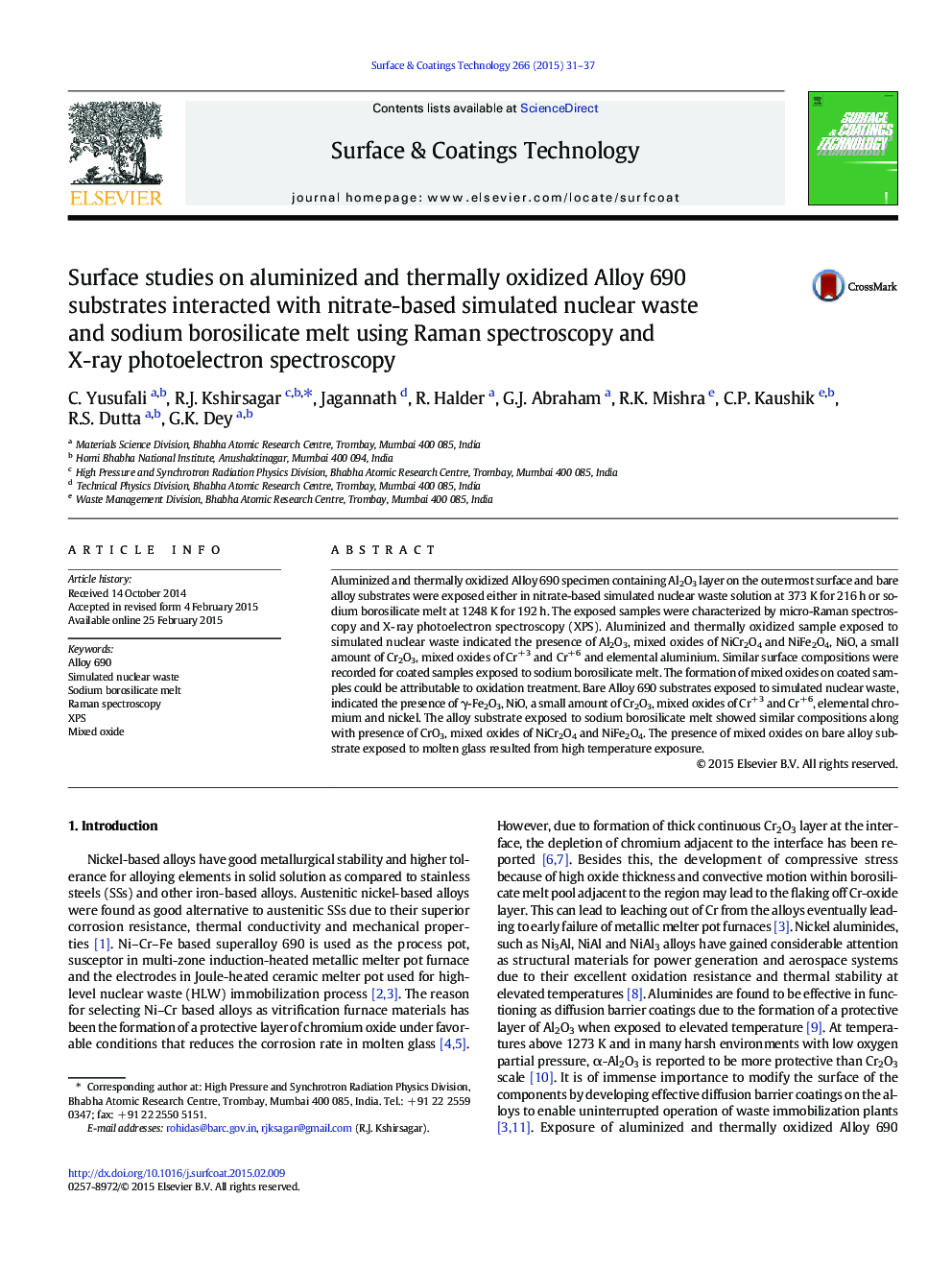| Article ID | Journal | Published Year | Pages | File Type |
|---|---|---|---|---|
| 1657225 | Surface and Coatings Technology | 2015 | 7 Pages |
•Aluminized and oxidized Alloy 690 exposed to simulated nuclear waste and glass•Exposed samples characterized using Raman spectroscopy and XPS•Similar surface compositions noticed for coated samples exposed in both media•Minor variation in surface composition of bare alloy noted between exposed specimen•Difference between two techniques resulted from depth sensitivity.
Aluminized and thermally oxidized Alloy 690 specimen containing Al2O3 layer on the outermost surface and bare alloy substrates were exposed either in nitrate-based simulated nuclear waste solution at 373 K for 216 h or sodium borosilicate melt at 1248 K for 192 h. The exposed samples were characterized by micro-Raman spectroscopy and X-ray photoelectron spectroscopy (XPS). Aluminized and thermally oxidized sample exposed to simulated nuclear waste indicated the presence of Al2O3, mixed oxides of NiCr2O4 and NiFe2O4, NiO, a small amount of Cr2O3, mixed oxides of Cr+ 3 and Cr+ 6 and elemental aluminium. Similar surface compositions were recorded for coated samples exposed to sodium borosilicate melt. The formation of mixed oxides on coated samples could be attributable to oxidation treatment. Bare Alloy 690 substrates exposed to simulated nuclear waste, indicated the presence of γ-Fe2O3, NiO, a small amount of Cr2O3, mixed oxides of Cr+ 3 and Cr+ 6, elemental chromium and nickel. The alloy substrate exposed to sodium borosilicate melt showed similar compositions along with presence of CrO3, mixed oxides of NiCr2O4 and NiFe2O4. The presence of mixed oxides on bare alloy substrate exposed to molten glass resulted from high temperature exposure.
